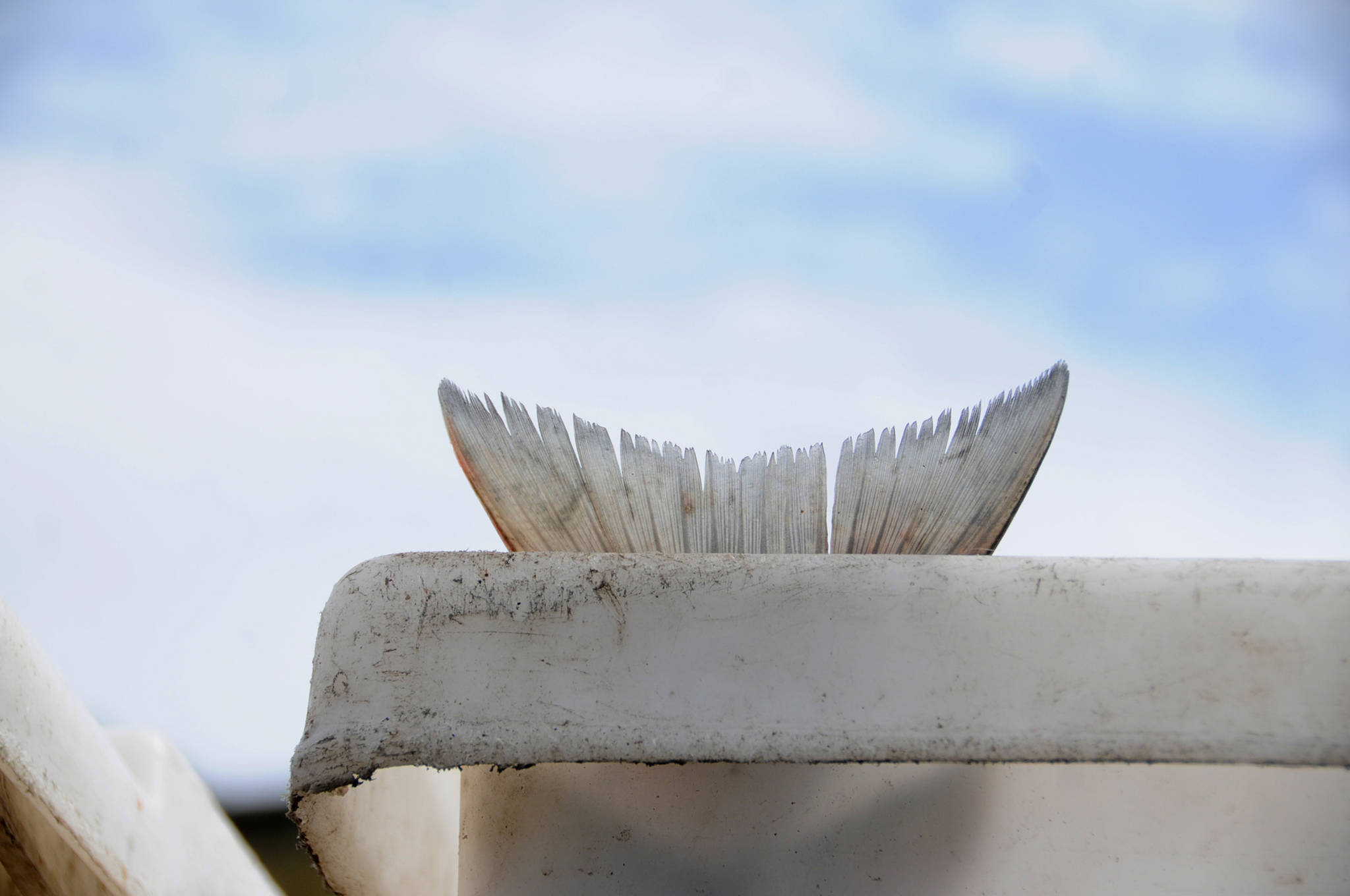Upper Cook Inlet’s commercial fishing season has been relatively slow so far, but it will likely pick up speed soon.
The earliest commercial fishing in Upper Cook Inlet begins in May, with the northern district set gillnet fishermen. Drift gillnet fishermen in the Central District and some east side set gillnet fishermen started in late June, with the East Forelands and the Kenai sections opening for the first time on Monday. Up through July 12, all the commercial fishermen together had landed about 671,614 salmon, according to Alaska Department of Fish and Game harvest data.
The vast majority of that is sockeye salmon — about 587,452 sockeye had been landed as of July 12. However, one anomaly this year is a large number of chum salmon showing up in the drift gillnet catch — 50,786 fish, according to Fish and Game data.
There aren’t a lot of chum salmon caught in Cook Inlet in general, as compared to other areas of Alaska. This is the largest harvest of chums in the drift gillnet fleet since 1996, said area management biologist Pat Shields.
“It’s the highest catch since then,” he said. “We don’t have any stock assessment programs where we enumerate them, other than in Chinitna Bay … They are almost all chum salmon headed to the Susitna River or to the (Cook Inlet) west side drainages.”
Thursday was the first period that drift gillnet fishermen were out in Drift Area 1, an area in the middle of Cook Inlet between Kalgin Island and the Anchor Point Light. Shields said he’d gotten some early reports from fishermen that Thursday would be their best day of the season so far.
It’s still too early in the run to say whether the sockeye salmon forecast will be accurate, but so far, everything is looking normal, Shields said. Indications from the Anchor Point Offshore Test Fishery, an experimental Fish and Game-operated fishing boat that samples fish passing into Cook Inlet, marked several large days of passage, but it’s hard to say when those fish will reach the rivers, he said.
“We’re sitting in a good position right now, everything is about what you would expect right now,” he said. “Everything does appear normal with the projected size of the run.”
The Kenai River’s sockeye sonar has recorded about 115,605 fish as of July 12, with daily passage rates ranging widely between 5,000 fish and about 20,000 fish in the past week. The Kasilof River, which always has a smaller run than the Kenai, has seen about 120,157 sockeye past the sonar as of July 12, with daily passage rates ranging between about 2,500 fish and nearly 6,000 fish for the past week, according to Fish and Game data.
It’s still early in the season. Mark Powell, owner of Alaska Salmon Purchasers in Nikiski, a processor that works only with setnetters, said fishermen had brought in several drop-offs during the Thursday period and it was mostly sockeye, as it usually is. Catches will probably pick up relatively soon as the run swells, he said.
“It’s slow, but we’ve had good seasons that started this slow,” Powell said.
Prices started higher early in the season — ranging between $1.50 and $2 per pound for sockeye, depending on the processor — and have since fallen, as they usually do when more fish reach the market. Prices at the dock varied depending on how the fish were kept but hovered around $1.50 per pound for sockeye.
Shields said the managers were projecting the runs to both rivers to meet their escapement goals and possibly toward or over the upper ends, and were comfortable using the additional commercial fishing hours allowed in the east side setnet fishery this week. An emergency order issued Thursday extended drift gillnet fishing in the expanded Kenai, Kasilof and East Forelands sections, known commonly as the corridors, until 10 p.m. He said the commercial fishermen would likely have an additional fishing period Friday or Saturday as well.
Reach Elizabeth Earl at elizabeth.earl@peninsulaclarion.com.

